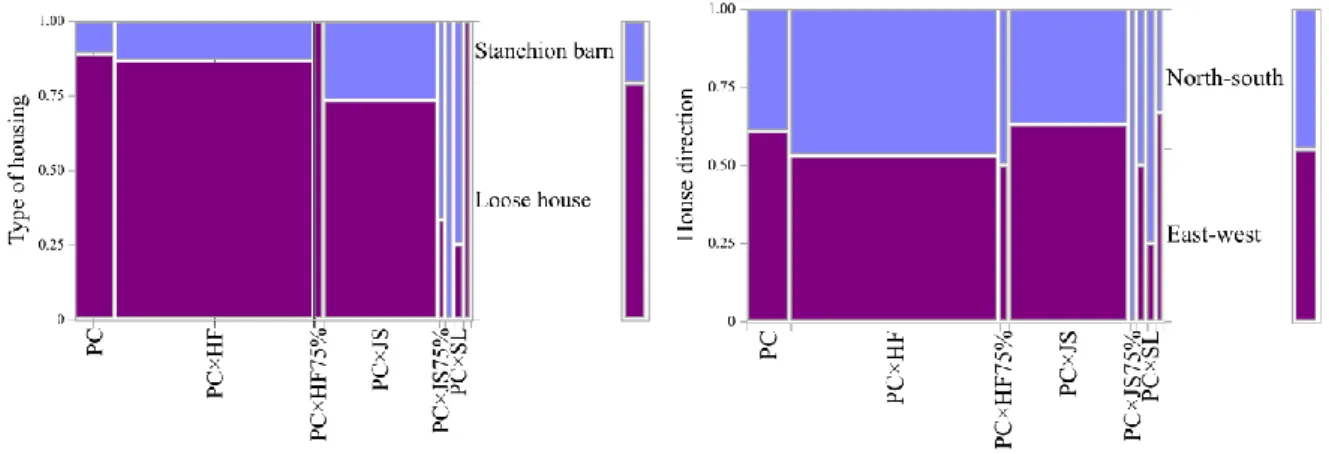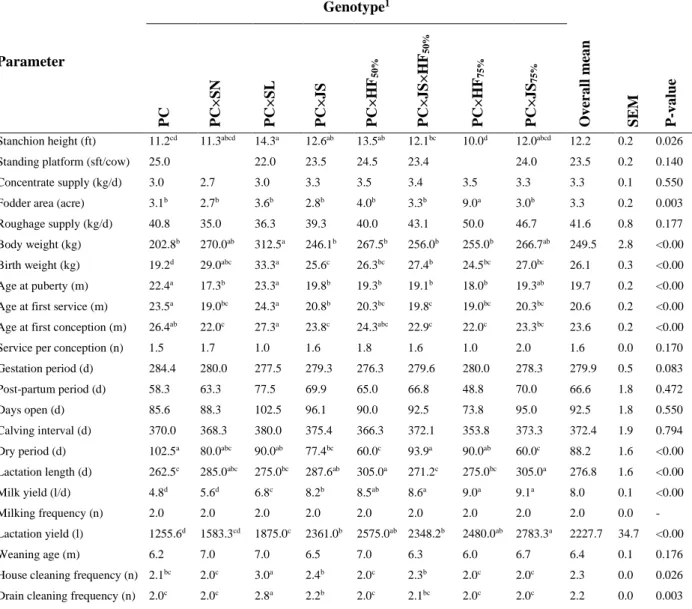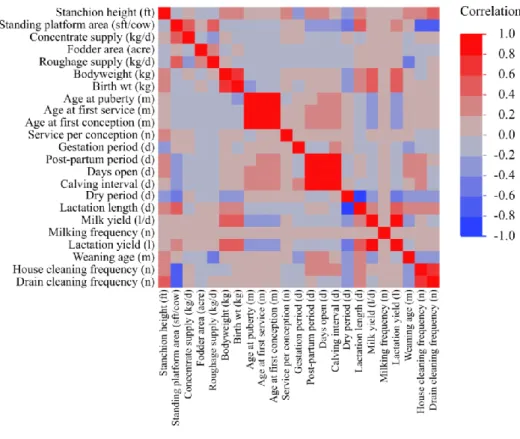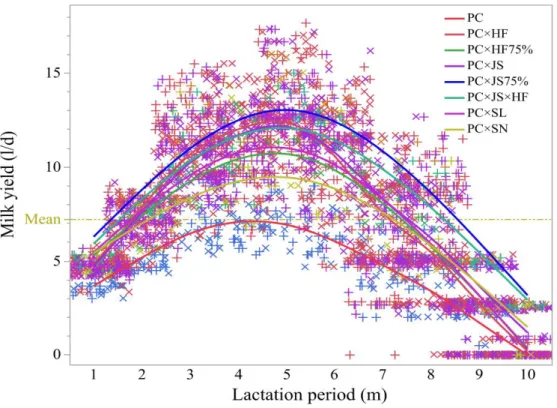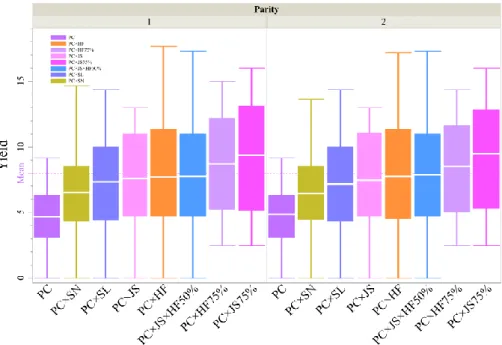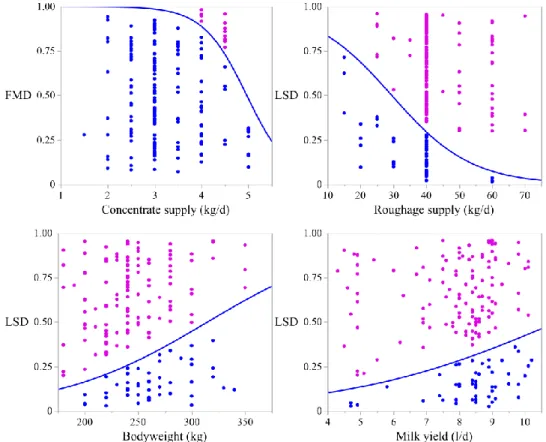General summary statistics of the different subtypes of Pabna cattle at Bhangura, Pabna, Bangladesh (N=170). Color chart showing multiple correlation coefficient matrix of the productive and reproductive parameters of the different subtypes of Pabna cattle at Bhangura, Pabna, Bangladesh (N=170). Effects of parity on average daily milk yield of the different subtypes of Pabna cattle at Bhangura, Pabna, Bangladesh (N=170).
Effects of parity on milk yield over the entire lactation period of the different subtypes of Pabna cattle in Bhangura, Pabna, Bangladesh (N=170). Bivariate logistic regression showing effects of live weight, milk yield, forage and concentrate supply on herd health of the different subtypes of Pabna cattle in Bhangura, Pabna, Bangladesh (N=170). Marketing system of milk from the different subtypes of Pabna cattle in Bhangura, Pabna, Bangladesh (N=170).
Mohammad Alamgir Hossain, Dean of the Faculty of Veterinary Medicine at Chattogram Veterinary and Animal Sciences University, and Professor Dr. Average live weight of the highest milk yield PC×JS75% was 1.32 times higher than the PC. A structured questionnaire was prepared to get the required information according to the objectives of the study.
Ɛijkln = Random sampling error of feature ‘i’ at level ‘jth’ of predictor ‘α’, level ‘kth’ of predictor ‘β’, predictor ‘lth’.
Results
About 85% of farmers used artificial insemination for cattle breeding and about 15% of farmers used natural breeding bulls for cattle breeding. In the case of the bovine skin disease vaccine, about 35% of the cattle were vaccinated, while the rest were not vaccinated (Figure 3).
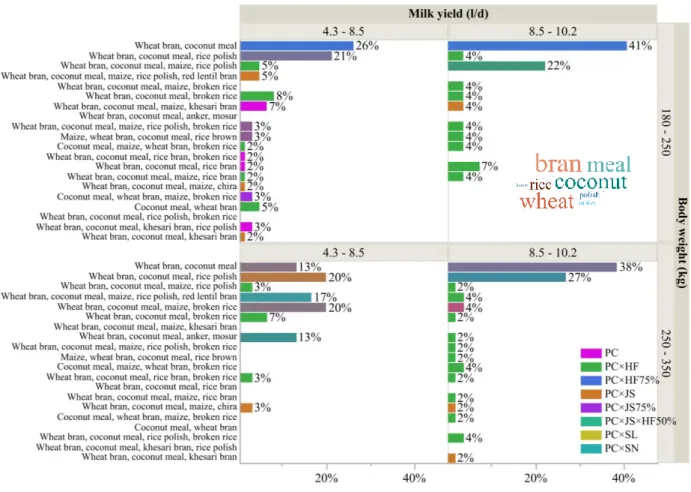
Productive performance
Similar to birth weight, mean live weight differed significantly (p<0.01) between PC subtypes. Average daily milk yield (ADMY) differed significantly (p<0.01) between PC subtypes (Table 1). Increased live weight and increased supply of bulky forage due to increased forage area significantly increased milk yield (Figure 4).
Calving interval, days open and age at first conception constituted the highest eigenvectors controlling maximum variability in milk yield (Figure 5). Binary linear regression showing the effects of forage area (acre), raw feed supply (kg/d), live weight (kg), dry period (d), postnatal period (d) and calving interval (d) on average daily milk yield of different subspecies of Pabna cattle (N=170). Principal component analysis showing dimensional and latent trends of components showing milk yield variability shown in “x” as component 1 (60.4%) and “y”.
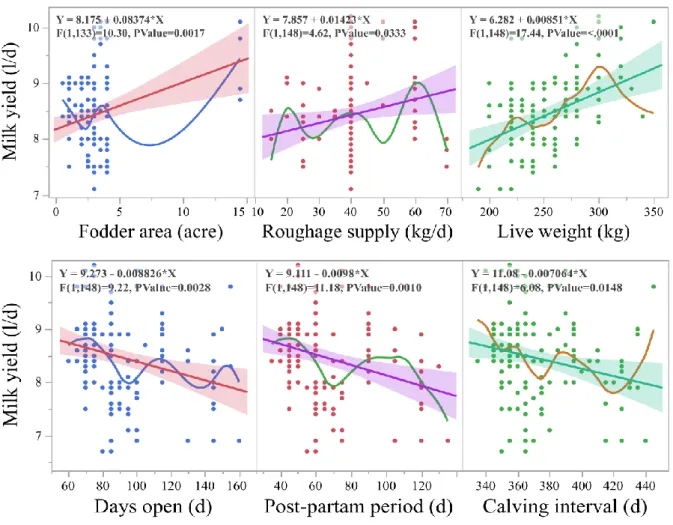
Reproductive performance
The mean age at first service (AFC) differed significantly (p<0.01) between PC subtypes. The earliest and latest AP was recorded for PC×SN and PC×SL genotypes, respectively. Mean service per conception (SPC) did not differ (p>0.01) between PC subtypes.
Mean postpartum period (PPP) did not differ (p>0.01) among different subspecies of Pabna cattle.
Effects of genotype
Effects of parity
Herd health
Marketing of milk
Discussion
18 | P a g e According to Saadullah (2001), many diseases have significantly adversely affected the productivity of cattle in Bangladesh. The mean birth weight of the Pabna dairy cow breed (CDC) ranged from 19.2 to 33.3 kg in our study. These differences, however, may be due to differences in genotype, diet, feeding, environment, semen quality, egg condition, disease and other management factors. 2016) further reported that the body weight of Holstein Frisia and Pabna crosses was 324.0±0.7 kg, which is more than the present.
Body weights of different genotypes can vary due to genetic variation, environment, management, feeding, diet and disease. 2019) reported that the lactation length (LL) of Jersey crossbreds was 364.2±9.5 days, which is higher than in the current study. 2007) further reported that more than 16 months of longer LL reduced annual milk yield and 10 to 16 months of LL was optimal. Amin and Afroz (2021) reported that average daily milk yield (ADMY) of PC was 5.3 liters. 2017) reported that a Jersey crossbred produced 9.6 kg of milk per day, which supports our findings. 2020) further reported that Jersey CDC in the tropical region could. 2007) reported that a local and Jersey cross produced 5.7±0.9 liters/day, which is lower than our findings. In contrast, Mondal et al. 2013) reported that ADMY increased with body weight, supporting our findings. 1987) and Řehák et al. (2012) found that milk production increased as body weight and lactation length increased. 2012) reported that the inclusion of increased amounts of forage in the diet increased ADMY over time in CDC. 2001) reported that AP Deshi, Friesian × Deshi and Sahiwal × Deshi CDC and 24.4 months, which is in close agreement with the current study.
The difference in AP between different genotypes may be due to genetic variation, handling, feeding, disease state, hormonal activity, stressor and body condition score. AFC can vary due to genetic variation, climate, age at puberty, hormonal factors, and estrous synchronization. In a previous study, Islam et al. 2016) further reported that the CI for Local Frisian and Pabna cattle was 12.4±0.7 and 12.2±1.2 months, respectively, which supports the current study.
The CI in pasture-based productivity in New Zealand was 368 days (LIC and DairyNz. 2013). The higher CI is the result of more open days, which can be attributed to poor breeding management, low nutritional status and lack of appropriate artificial insemination services (Belay et al., 2012).
Effect of genotype
2016) further reported that the CI for Local Frisian and Pabna cattle was 12.4±0.7 and 12.2±1.2 months, respectively, which supports the current study. Increased body weight of the subtypes of Pabna cattle with increased milk yield had a probability of lumpy skin disease. However, increased forage and concentrate supply significantly reduced the likelihood of foot-and-mouth disease.
Ayelet et al., 2013 found in their study on lumpy skin diseased cattle, crossbred cattle had a higher morbidity rate, mortality rate and mortality rate. So increased body weight has increased milk production and can cause lumpy skin disease due to cow genotypes and increased supply of raw feed and concentrate can reduce the probability of foot and mouth disease due to high feed in food. According to Ghosh and Maharjan (2002) and Halder and Barua (2003), there were three types of milk marketing channels present in Bangladesh such as, traditional milk marketing channel, pala milk marketing channel and cooperative milk marketing channel .
Most dairy farms in Bangladesh were small in size, produced little milk and sold the extra milk after consumption. On the other hand, compared to non-cooperative farmers, the cooperative farmers had a larger number of cows and milked each cow more often. The milk quality of traditional and pala milk marketing channel was not good as cooperative milk marketing channel as that milk was contaminated with various adulterants.
Moreover, farmers did not get a good price in this marketing system as they depended on gowalas and middlemen. On the other hand, the cooperative price was set and changed according to the percentage of milk fat, which showed that the cooperative marketing channels were more efficient than the alternatives.
Conclusion
25 | Pages subtypes PC are associated with increased likelihood of health hazard that can be partially ameliorated by providing optimal roughage and concentrate supply.
The effect of body weight at calving on milk production and reproductive performance of Friesian × Zebu. Investigation of reproductive and production performance of crossbred dairy cattle under Smallholders Management System in Bishoftu and Akaki Towns. Genetic trends of some important milking traits of crossbred cows in Baghabarighat dairy area of Bangladesh.
Productive and reproductive performance of dairy cattle of different breeds and crosses at Central Cattle Breeding and Dairy Farm, Savar, Dhaka, Bangladesh. Reproductive performance evaluation of holstein friesian and their crosses with boran cattle breeds in ardaita agricultural vocational training dairy farm, Oromia region, Ethiopia. Productive and reproductive performance of crossbred and native dairy cows under rural conditions in Comilla, Bangladesh.
Study on reproductive performance of crossbred dairy cows under small holding conditions in and around Gondar, Northwest Ethiopia. Study on the productive and reproductive performance of different dairy genotypes grown in the dairy farm of the agricultural university of Bangladesh. Prevalence and risk factors of subclinical milk fever and ketosis in lactating crossbred dairy cows with their therapeutic management in Bangladesh.
Diet-induced milk fat depression in dairy cows results in increased trans-10, cis-12 CLA in milk fat and coordinate suppression of mRNA abundance for milk enzymes involved in milk fat synthesis. Evaluation of productive and reproductive performances of local and crossbred cows in Manikgonj district of Bangladesh. Effect of breed, calving season and parity on milk yield, body weight and efficiency of dairy cows under subtropical conditions.
Oats (Avena strigosa) as winter feed for dairy cows in Vietnam: An on-farm study. Consequence of maternal genotypes on productive and reproductive performance of dairy cows under rural conditions in Bangladesh. A comparative study of productive and reproductive performance of different crossbred and native dairy cows under small dairy cows.
